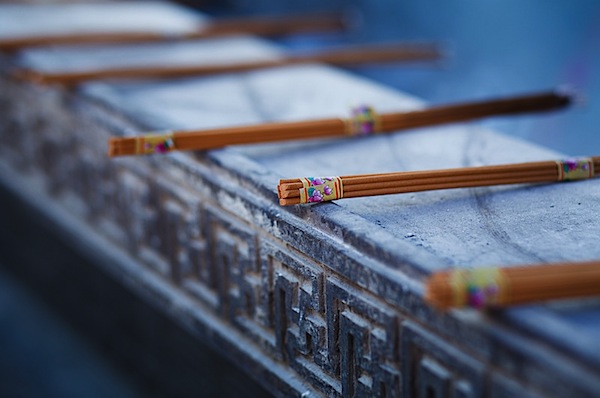A Guest Post by Andrew S Gibson – author of the brand new eBook – Beyond Thirds.
Here are five tips for improving your composition. You may be surprised to learn that none of them involve the rule of thirds. There’s a good reason; it’s one of the first things photographers learn, so most of you are aware of this ‘rule’ (I prefer to think of it as a guideline) already.
Learning the rule of thirds is a bit like taking driving lessons and being told that you press the gas pedal to accelerate and the brake pedal to stop the car (and nothing more). It covers the basics, but you know that there’s a lot more to driving than that. It’s the same with composition.
1. Stop Composing According to the Rule of Thirds

The thing is with the rule of thirds is that sometimes it works, sometimes it doesn’t. The thirds are not always the best place to position the subject. The above photo is a good example – the symmetrical shape of the hood ornament demanded a central composition. How do you know when to ‘break’ the rule of thirds? Read on to find out.
2. Be aware of Balance

One of the questions I ask myself when I take a photo is what is the relationship between the subject and the rest of the image? How do the two balance out? This is something that I judge by feel more than anything else. A balanced image has a peaceful, harmonious feel. The photo above is balanced – the three monkeys and the chinese chess pieces have an equal ‘weight’ within the composition. The warm colours are also quite harmonious and in balance with each other.
You may wish to create a more dynamic image – in which case see tip 4.
3. Simplify

Make you compositions as simple as possible. You can do this by excluding anything that isn’t necessary. Often this just means moving closer to your subject so that there is less stuff in the background. You could also use a longer focal length, as the narrower field of view excludes more of the background.
Another technique is to use a wide aperture to throw the background out of focus. The idea is to try and eliminate anything that distracts from the main subject of your photo. That’s what I did with the above photo, to concentrate attention on the flower.
4. Use Lines to Create Dynamic Tension

Lines are a powerful element of composition, and the viewer’s eye naturally follows any lines in your images.
One use of line is to create a sense of depth. You can do this with lines that travel from the front of the image to the back. Diagonal lines are more dynamic than straight ones. Horizontal lines are least dynamic of all. The line of the altar in the above photo, taken in a temple in Shanghai, creates a strong sense of movement and depth.
5. Work the Subject
If you find a good subject, sometimes it’s a good idea to take lots of photos. The key is to think about what you are doing, rather than ‘machine gunning’ away. Ask yourself how you can improve the composition. Try taking photos from different angles, or with a different focal length. This is called working the subject, and you’ll often find that it helps you take stronger images.
Beyond Thirds
You can learn more about composition by buying my latest eBook, Beyond Thirds, from Craft & Vision today – it’s only $ 5!
Andrew S Gibson is a freelance writer based in Auckland, New Zealand. He is the Technical Editor of EOS magazine and writes photography eBooks for Craft And Vision. including The Evocative Image and Beyond Thirds. Follow Andrew on Facebook here.
Post originally from: Digital Photography Tips.
Check out our more Photography Tips at Photography Tips for Beginners, Portrait Photography Tips and Wedding Photography Tips.
5 Steps to Better Composition